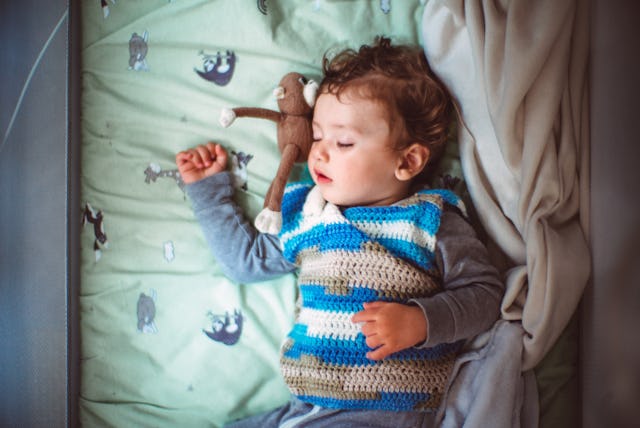A New Study Warns That Mattresses May Expose Children To Brain-Harming Chemicals
The chemicals have been linked to developmental and hormonal disorders.

Babies’ and children’s mattresses and bedding release toxic chemicals and flame retardants linked to developmental and hormonal disorders, according to two new studies.
“We measured chemicals in the air of 25 children’s bedrooms between the ages of 6 months and 4 years and found worrisome levels of more than two dozen phthalates, flame retardants and UV filters,” senior study author Miriam Diamond, a professor in the Earth Sciences Department at the University of Toronto, told CNN.
The study, published this week in the journal Environmental Science and Technology, found higher concentrations of the chemicals closer to children’s beds, indicating elevated exposure while sleeping.
Diamond’s team conducted a follow-up study to determine what released the chemicals, and how they were released. After linking the compounds to multiple different brands of mattresses, the researcher found that more compounds were emitted when body weight and temperature was applied to the mattresses — meaning a child sleeping on the mattress actually increases their own exposure.
Current safety standards for mattresses don’t take the increased weight and temperature of a sleeping child into account.
The study found elevated levels of phthalates in the children’s rooms. Phthalates are restricted in toys, but not mattresses. The National Institute of Environmental Health Sciences says that they affect the endocrine system, and can cause early puberty, reproductive issues, genital defects, hormonal issues and more.
The study also reported elevated levels of flame retardants, including one that is banned in Canada, and banned for children’s pajamas in the U.S. Many of the flame retardants found by the researchers are known to cause reproductive, developmental and nervous system disruption in toddlers.
Children are more vulnerable to these contaminants than adults because of their higher breathing rate, more hand-to-mouth contact, and greater skin surface area relative to their body weight.
The mattresses used in the study were purchased in Canada. While the study did not include the brand names of the mattresses, the researcher told CNN that the mattresses were well-known, low-cost, and could be purchased at major retailers across North America.
It can be difficult to entirely avoid compounds that may pose a risk to your children, but there are a few things parents can do to help minimize it.
Diamond recommended that parents choose neutral-colored mattresses and bedding for children, as some of the chemicals used to prevent color fading can be questionable. She also recommended washing bedding and pajamas often.
“The sheets and sleeper act as a very effective barrier,” she said. “And cleaner the sheet or clothing is, the more the chemicals can go from the source right into the sheet, or the sleeper.”
It can be frightening to hear that children might be at risk while they are supposed to be sleeping, safe and sound, but it’s comforting to know that these steps can help mitigate potential harm.